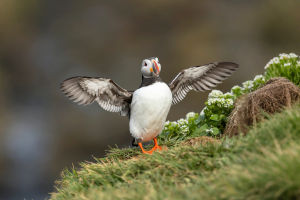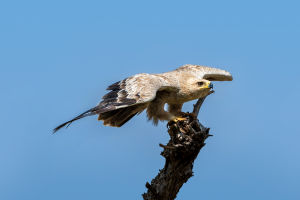When we think of exotic birds, Turacos often come to mind, especially due to their striking and unique appearance. Found primarily in sub-Saharan Africa, these birds are a true wonder of nature.
Known for their vibrant green and purple feathers, Turacos belong to the family Musophagidae and are famous for a special pigment called turacins, which gives them their distinctive green color. So, why are these birds so fascinating? Let’s dive into the world of Turacos!
The Different Types of Turacos
There are around 23 species of Turacos, each with its own set of colors and behaviors. Some of the most well-known species include the White-cheeked Turaco, the Lesser Turaco, and the Great Blue Turaco. The Great Blue Turaco is especially impressive with its brilliant blue feathers and striking red wings, making it a favorite among birdwatchers. Meanwhile, the White-cheeked Turaco, with its bright green plumage and white facial markings, adds to the colorful spectrum of these remarkable birds.
Where Can Turacos Be Found?
Turacos are native to tropical and subtropical forests in Africa. They can be found in a variety of habitats, ranging from dense rainforests to woodlands and savannas. These birds are typically located in countries such as Uganda, Kenya, Congo, and South Africa. Because they are primarily forest dwellers, Turacos tend to stay in the canopy, where they are safe from predators.
Their vibrant colors help them blend into the lush green environments of the forest, though they can still be spotted from a distance due to their distinct movements.
Unique Features: Why Are Turacos Green?
One of the most intriguing features of Turacos is their green feathers. Unlike most birds, whose green feathers come from a combination of blue pigments and yellow pigments, Turacos have a pigment called turacins. This pigment gives their feathers a unique green color that is found in no other bird species.
It’s a rare and striking feature that sets Turacos apart from other brightly colored birds. The purple hue that can be found on their wings and tail feathers is caused by another pigment called turacins, which makes these birds even more extraordinary.
What Do Turacos Eat?
Turacos are primarily fruit eaters, which is why they are often found in trees with abundant fruit. They also enjoy a diet of flowers, leaves, and seeds. These birds are excellent foragers, using their strong beaks to pick fruit and leaves from branches. In addition to fruit, Turacos may also eat insects, small invertebrates, and occasionally small vertebrates, adding a bit of variety to their diet.
Are Turacos Social Birds?
Turacos tend to be solitary or live in small family groups. While they are not the most social of birds, they do communicate with one another using a variety of calls. Their loud, chattering calls can often be heard echoing through the trees in the early morning hours. During the breeding season, Turacos are more likely to come together, with males and females engaging in elaborate courtship displays. However, when not breeding, they prefer to stay in the higher branches of trees, where they are less likely to encounter predators.
Why Are Turacos Important to Their Ecosystem?
As frugivores, Turacos play an important role in their ecosystem by helping to disperse seeds. As they feed on fruit and other plant material, they help to spread seeds throughout the forest. This aids in the growth and regeneration of plants, contributing to the health and diversity of their environment. Additionally, Turacos’ presence in the ecosystem helps to support other wildlife, from predators that hunt them to other animals that rely on similar food sources.
Conservation Status: Are Turacos at Risk?
While many species of Turacos are not currently considered to be at risk, some species face challenges due to habitat loss and human encroachment. The destruction of forests for logging and agriculture has led to a decrease in suitable habitats for these birds. As a result, some Turaco species are listed as near-threatened or vulnerable. Conservation efforts to protect their habitats are essential to ensuring that these colorful birds continue to thrive in the wild.
Why You Should Care About Turacos
Turacos show us just how colorful and lively African wildlife can be. Their bright green and purple feathers, rare natural pigments, and important role in spreading seeds make them truly unforgettable. We believe learning about Turacos is a great way to better understand and appreciate the rich biodiversity of Africa.
Next time we explore the forests of Africa, spotting a flash of green among the trees might just be the highlight of our journey. Let’s keep an eye out for these stunning birds — they’re one more reason to fall in love with nature’s wonders!


